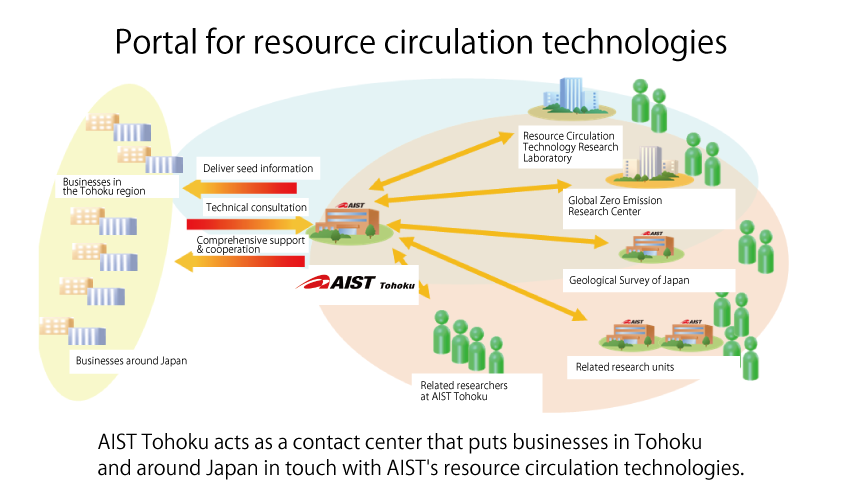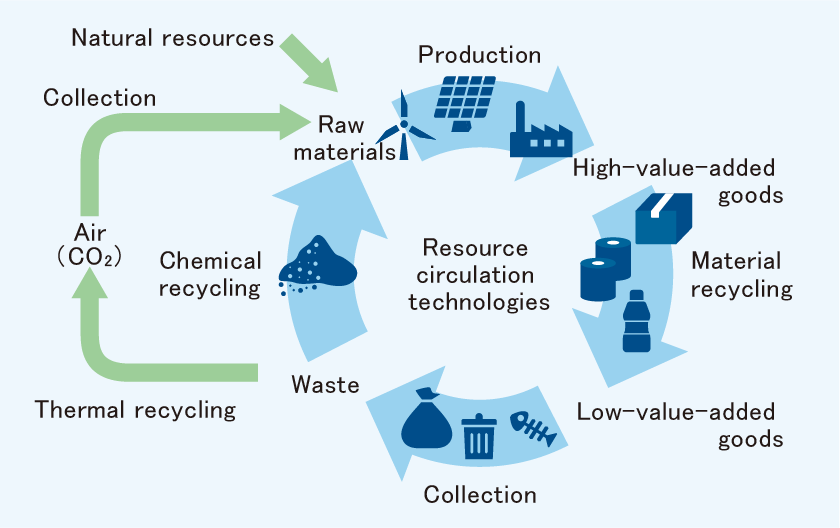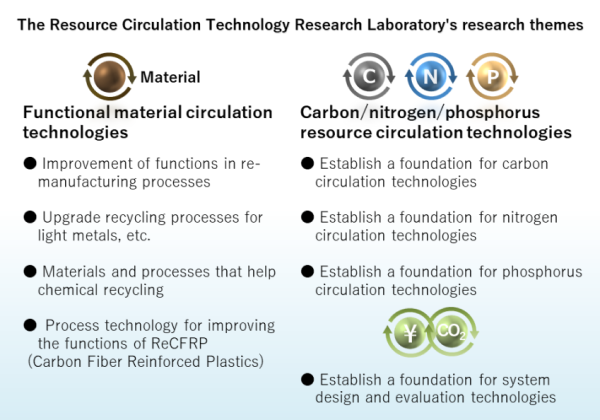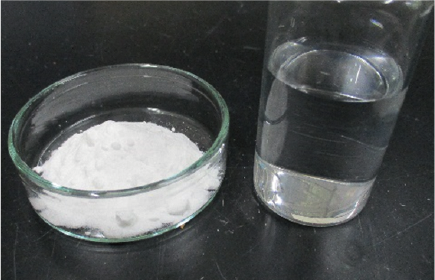AIST's initiatives for resource circulation technologies
AIST Tohoku has set "resource circulation technologies" as a featured research theme and aims to meet environmental constraints by circulating and recycling substances and help realize a sustainable society. It is helping to strengthen the competitive industrial power of Tohoku as a contact center for the full spectrum of resource circulation technologies promoted by AIST and the Ministry of Economy, Trade and Industry, and by promoting environmentally friendly open innovations together with businesses and local communities.
AIST Tohoku is
a comprehensive contact center for AIST's resource circulation technologies
AIST is home to departments that research resource circulation technologies all around Japan.
AIST Tohoku receives inquiries from enterprises not only in Tohoku but right around Japan as well, acting as a contact center to introduce them to the most suitable researchers involved in resource circulation technologies working at various locations throughout the country.
Think of AIST Tohoku as a navigator in a planetarium, pointing out shining stars in "resource circulation" colors from the galaxy of AIST bases in Japan to form a "resource circulation" constellation.

Resource Circulation Technology
Triggered by the SDGs (Sustainable Development Goals), etc., trends toward realizing a sustainable society are advancing globally.
The purpose of resource circulation technology is to reshape industry and society into sustainable versions of their old selves by circulating pre-used resources and recycling them into resources that can be fed into new productive activities.
In addition, incorporating resource circulation technology into industry is also considered to contribute to strengthening industrial competitiveness, as it will lead to compliance with environment regulations in other countries.

Forging ahead with "energy/environment constraints" using AIST's system that fuses fields together
AIST has set up the Resource Circulation Technology Research Laboratory as a research system for working on strategic research issues that contribute to solution of the social issue of "energy and environment constraints," on a company-wide basis and is promoting research and development of "resource circulation technologies" by fusing areas.
■ Outline of the Resource Circulation Technology Research Laboratory
In its overall endeavors to help solve the social issue of "satisfying energy and environmental constraints," AIST's six research areas of Energy & Environment, Life Science & Biotechnology, Materials & Chemistry, Electronics & Manufacturing, Geological Surveys, and Metrology collaborate work together as one to form a virtual laboratory that brings together researchers from various disciplines who have potentials in relevant research areas.
AIST Tohoku also acts as a contact center for it.
■ Our mission is technical development that enhances both the environment and economy
The conventional one-way economy, in which we mine various resources, produce products, and then dispose of them, depletes resources and generates environmental pollution. Recycling and circulating materials is therefore now crucial. But to ensure the concepts of recycling and circulation penetrate society, it is critical to build a "circular economy" that enables the concepts to work from an economic perspective as well.
AIST's important mission is to develop technology that enhances both environmental conservation and industrial profits. It is also vital to comply with waste plastics import/export restrictions and other waste regulations, which are global trends.
■ The Resource Circulation Technology Research Laboratory's research themes
The Resource Circulation Technology Research Laboratory is working on research involving functional material circulation technologies such as material recycling, which recycles waste as materials for products, and chemical recycling, which recycles plastics as raw materials after changing their compositions by chemical reactions, as well as carbon/nitrogen/phosphorus resource circulation technologies.
At the same time, the Lab is also engaged in research to evaluate and optimize each resource circulation technology by adopting LCA (Life-Cycle Assessment: a method of evaluating environmental loads in the life cycle of a product or service) and taking costs into consideration.

Introducing the main research themes underway at AIST Tohoku
<Example of chemical recycling>
Compliance with laws and regulations on plastic waste

Established a technology that
continuously converts polyesters
(such as PET) into monomers
AIST Tohoku is playing a central role in developing of process technologies for converting waste plastics into monomers under environmentally friendly conditions.
AIST Tohoku has already developed the basic technology that uses high-temperature and high-pressure water to change a plastic raw material, PET, into monomers such as terephthalic acid and ethylene glycol. Currently, we are working on device design and process development that enable continuous processing.
<Example of carbon circulation technologies>
Aiming for virtually zero CO2 emissions by 2050

Developed zeolite films that have
high selectivity for CO2
To realize the goal of carbon neutrality by 2050, approximately 10 billion tons of CO2 globally and approximately 1 billion tons in Japan must be separated and collected, and then stored or recycled annually. Since a large number of industries generate CO2, the need exists to develop CO2 separation/collection technologies that meet a wide range of concentrations and content percentages of impurities other than CO2.
AIST Tohoku is playing a central role in developing of "chabazite-type zeolite films," which are CO2 separation films possessing high selectivity and separability.
Contact information
AIST Tohoku Collaboration Affairs Office
4-2-1 Nigatake, Miyagino-ku, Sendai, Miyagi 983-8551 Japan
E-mail:webmaster-tohoku-ml*aist.go.jp (Please convert "*" to "@".)

